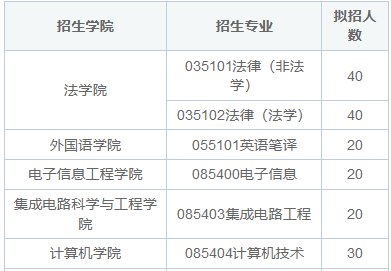2024年北京航空航天大学非全日制研究生招生考试《工业科学综合》考试大纲
Expected skills and content of the exam
The examinee is expected to be able to analyze and solve an automation control problem and a problem involving several fields of physics (electrokinetics, mathematics for physics, wave physics, electromagnetism, thermodynamics, optics, and mechanics). The exam consists of two parts: an automation control problem which counts for 50 points, and a physics problem which counts for 100 points.
Engineering Science part (automation control)
I - Modeling of automation systems
1°) Forward chain control
2°) Feedback control
II - Hypotheses related to the study of linear time-invariant (LTI) systems
1°) Continuity
2°) Linearity
3°) Time invariance
III - Performances of LTI systems
1°) Steady-state performances
2°) Transient-state performances
IV - Mathematical tools for the study of LTI systems
1°) Laplace transform of a continuous signal
2°) Modeling by a block diagram
V - Time response
1°) First order systems
2°) Second order systems
3°) Higher order systems
VI - Frequency response
1°) Definition and methods
2°) Frequency plots
3°) Frequency response of some basic systems
4°) Frequency response of other systems
VII - Algebraic methods for the determination of the performances of a LTI system 1°) Stability
2°) Accuracy and robustness
3°) Swiftness and damping
VIII - Determination of the performances of a LTI system from the frequency response of its open- loop transfer function
1°) General methodology: Nyquist criterion
2°) Stability
3°) Damping: Nichols chart
4°) Accuracy/robustness and swiftness
IX - Compensation of control systems
1°) Types of controllers (serial, parallel, by anticipation)
2°) Classical controllers
Physics part
I - Electrokinetics
1°) General laws of electrokinetics
2°) Usual theorems of electrokinetics
3°) Transient regimes
4°) Linear circuits used with forced sinusoidal excitations
5°) Transfer function and filtering
6°) Filtering of periodic signals
II - Mathematics for physics presented through steady-state electromagnetism
1°) Charge distribution
2°) Electrostatic field
3°) Current distribution
4°) Magnetostatic field
5°) An electrostatic potential
6°) A vector potential
7°) The electrostatic dipole - The magnetic dipole
III - Wave physics
1°) 1-D d’Alembert equation
2°) Synchronous harmonic waves superposition: interferences and resonance 3°) Electromagnetic waves in vacuum
4°) Reflection of an electromagnetic wave off a perfectly conducting medium 5°) Linear propagation phenomenon - dispersion
6°) Propagation of an electromagnetic wave in a real conducting medium - absorption 7°) Reflection and refraction of an electromagnetic wave on a surface
IV - Electromagnetism
1°) Electromagnetism postulates
2°) Energy carried by an electromagnetic wave
3°) Conductive media
4°) Electric dipole radiation
5°) Quasi stationary state approximation
6°) Electromagnetic induction
V - Thermodynamics
1°) Temperature - Description of model fluids
2°) Thermodynamical system at the thermodynamical equilibrium
3°) First law of thermodynamics
4°) Second law of thermodynamics
5°) Heat engines
6°) Phase transition
7°) Transport phenomena: particles diffusion - heat conduction
VI - Optics
1°) Elements of geometrical optics
2°) Wave model of light
3°) Interference phenomena
4°) Spatial and temporal coherences
5°) Michelson interferometer
VII - Mechanics
1°) Newton’s laws of motion
2°) Work,potential energy and kinetic energy
3°) Angular momentum
4°) Linear systems used with forced sinusoidal excitations
报考资格评估
- 大专以下
- 大专
- 本科有学位
- 本科无学位
- 硕士
- 博士


